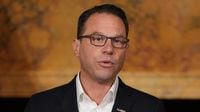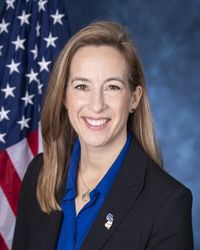As the dust settles from the November 2025 elections, Democrats across the United States are taking stock of both their victories and the challenges that lie ahead. The party, which has found itself out of power in the White House and both houses of Congress, is drawing hope from a series of key wins in local and state races, while also contending with internal divisions laid bare by a bruising government shutdown and debates over the future of health care policy.
On November 4, 2025, Democrats swept a handful of important elections, signaling a potential shift in the nation’s political winds. According to reporting from multiple outlets, including the Bangor Daily News and national wire services, the party’s candidates triumphed in races that showcased both the diversity and evolving strategy of the Democratic coalition. Among the most closely watched contests was the New York City mayoral race, where Zohran Mamdani, a 34-year-old socialist, captured the mayor’s office with a campaign that openly embraced the legacy of labor icon Eugene V. Debs. On election night, Mamdani quoted Debs, reminding supporters of the long tradition of left-wing activism in American politics.
Republicans, including former President Donald Trump, wasted no time in seizing on Mamdani’s victory. Trump had endorsed former Governor Andrew Cuomo, who ran as an independent after losing the Democratic primary—a move that, according to polling expert Bill Schneider of George Mason University, may have actually boosted Mamdani’s support by framing the race as a referendum on Trump himself. The outcome in New York, while significant, is not easily replicated elsewhere, as analysts caution that the city’s unique political landscape makes it a poor bellwether for national trends.
Elsewhere, Democrats also scored major wins in gubernatorial contests. Mikie Sherrill emerged victorious in New Jersey, while Abigail Spanberger took the governorship in Virginia—a state that has trended Republican in recent cycles. These wins, though encouraging, are tempered by the reality that both states have histories of swinging between parties and may not be representative of broader national dynamics.
In California, voters approved Proposition 50 by a landslide, shifting the power to draw state legislative maps from the independent Citizens Redistricting Commission to the state legislature, where Democrats hold a majority. Governor Gavin Newsom, who is widely seen as a contender for the 2028 Democratic presidential nomination, staked much of his political capital on the measure. Newsom’s campaign framed the proposition as a direct response to Republican gerrymandering efforts in states like Texas, urging voters to see their support as a stand “against Trump.” Legal challenges to the measure are already underway in federal court, highlighting the ongoing partisan battles over the rules of democracy itself.
Despite these successes, party strategists and grassroots activists are keenly aware that the path to reclaiming national power is fraught. As Annlinn Kruger of Bar Harbor wrote in a letter published by the Bangor Daily News, “A Democratic win over self-styled ‘Trump before Trump,’ recent Florida resident Paul LePage, won’t be easy. Democrats swept last Tuesday’s elections with candidates who fit their constituencies—a Blue Wave depends on a Big Tent.” Kruger emphasized the importance of moderation and strong volunteer efforts in places like Maine’s 2nd Congressional District, where the party faces tough odds against well-known Republican opponents.
The aftermath of the longest government shutdown in U.S. history, which ended after November 9, 2025, continues to reverberate within Democratic ranks. Eight Democratic senators—Catherine Cortez Masto, Dick Durbin, John Fetterman, Maggie Hassan, Tim Kaine, Angus King, Jacky Rosen, and Jeanne Shaheen—voted with Republicans to reopen the government, a move that drew both praise for pragmatism and criticism for perceived capitulation. The shutdown had inflicted real pain on federal workers and food aid recipients, fueling frustration among the party’s base.
Senator Ruben Gallego of Arizona, who voted against the spending deal, confronted these tensions head-on during a town hall in Tucson on November 11, 2025. Addressing a crowd concerned about the impending expiration of Affordable Care Act (ACA) subsidies, Gallego acknowledged the hardship caused by the shutdown. “We saw the shutdown,” he said. “It was harsh. It was horrible.” He warned against “people playing the poor against the less-poor, only for the rich to win at the end. Because that is exactly what happened.” Gallego pledged to keep fighting for affordable health care, signaling the party’s intent to make health care a central issue in the 2026 midterms.
The town hall illustrated the party’s strategy: shift blame for rising health care premiums and looming Medicaid cuts squarely onto Republicans. This message resonated with attendees like Dr. Eve Shapiro, who told reporters, “The shutdown was a fight worth having, because it made more Americans aware of the issue of the expiring subsidies and how millions of people would be affected if they were not extended.” Yet not everyone was satisfied with the outcome. Michele Watson, a retired bookkeeper, lamented, “I don’t think that the Democrats who voted for the bill made a very good deal. They didn’t make, basically, any kind of deal. I’m very concerned about people losing their health care.”
Party unity remains fragile. At a Democratic dinner in New Hampshire, Senator Jeanne Shaheen faced heckling over her vote to end the shutdown but fired back, “You look at our record, and you tell me what you’ve done to protect the health care of Americans—and it’s not even close to what we’ve done.” The episode highlighted both the passion and the divisions within the party as it prepares for the next electoral cycle.
Some, like Rod Norrish, a retired epidemiologist in Tucson, pressed Gallego for a long-term Democratic plan to counter the conservative Project 2025 blueprint. Gallego replied that Democrats should develop a “Plan 2029 that focuses on making sure that Americans have a chance in this country,” including access to affordable housing. He then pivoted to criticizing the local Republican congressman for supporting tax cuts that would reduce Medicaid and SNAP benefits.
For all the infighting, there’s a sense among many Democrats that the party’s relentless focus on health care could pay dividends, just as it did after Republicans’ failed attempt to repeal the ACA in 2017. Gallego reminded attendees of that episode, saying, “They were just trying to save money, not necessarily save lives. This all sounds very familiar, right?”
As the 2026 midterms approach, Democrats are betting that voters will remember the pain of the shutdown and the threat to health care more than the party’s internal squabbles. Whether that bet pays off will depend on their ability to maintain a “Big Tent” and unite around issues that resonate with Americans from Bar Harbor to Tucson.
With the stakes as high as ever, the coming months will test whether Democratic victories in 2025 were a preview of a broader comeback or merely isolated successes in a divided nation.






